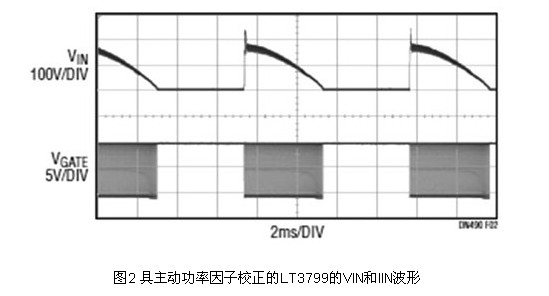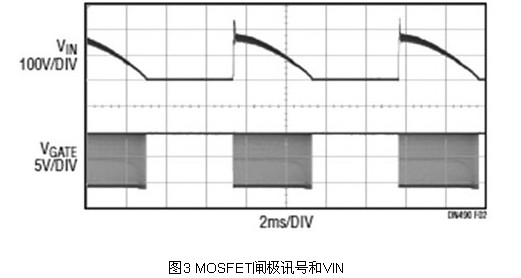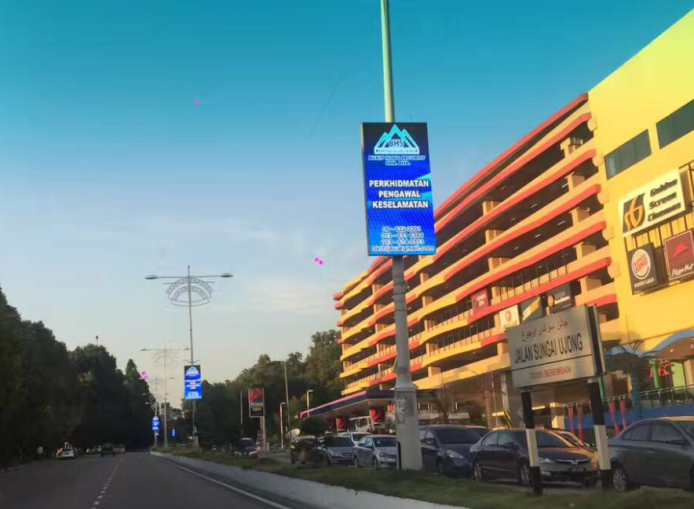In response to the need for off-line LEDs for general lighting applications, LED drivers must provide good isolation, high efficiency, PFC > 0.90 and TRIAC dimming, as well as good LED current regulation to maintain consistent brightness. At the same time, regardless of the input voltage or how the LED forward voltage changes, the LED driver must provide protection to ensure system reliability. As people pay more and more attention to the environmental impact of traditional lighting methods, the price of light-emitting diodes (LEDs) continues to decline, so for many off-line applications, high-power LEDs are rapidly becoming popular lighting solutions. Program. High-brightness LEDs save energy, have a long life and benefit the environment, and these features continue to drive the development of a wide variety of solid-state lighting (SSL) applications. According to market research firm Strategies Unlimited, by the end of 2010, the market for high-brightness LEDs has reached $8.2 billion, and is expected to grow to more than $20 billion by 2015. In the past few years, LEDs for backlighting of high definition television (HDTV) displays have been the main driver of the growth of the LED market. However, as LED lighting applications become more prevalent in commercial and residential environments, LED growth will accelerate significantly. Compared with traditional lighting methods, the power consumption of LED lighting can be greatly reduced, which is the main reason behind the high growth rate of LED lighting. To provide the same light output (in lumens) compared to incandescent lighting, LEDs require less than 25% of the incandescent power. LED lighting has many other advantages, including a longer working life than incandescent lamps, which can significantly reduce replacement costs; it can also dim LEDs with previously installed triac TRIAC dimmers. The main cost advantage, especially in the residential lighting sector. LEDs can be turned on in real time, unlike the energy-saving fluorescent lamps (CFLs) that require warm-up time, and the LEDs are not sensitive to the power cycle, which is also different from CFL. In addition, LEDs do not contain any toxic materials that need to be managed or disposed of, and CFLs require toxic mercury vapors to work. Finally, LEDs can achieve new, very flat form factors that are not possible with other technologies. LED lighting design requires very strict driving power as a key The use of off-line power to drive LEDs allows LED applications to grow rapidly because this form of power is fairly easy to obtain in commercial and residential buildings. Although LED lamp replacement is relatively simple to implement for end users, the difficulty in designing LED driver integrated circuits (ICs) has increased dramatically. Since LEDs require a well-regulated constant current source to provide a constant amount of light output, the use of an alternating current (AC) input power supply to power the LED requires some special design methods and some very specific design requirements. Depending on the differences in different parts of the world, off-line power supplies range from approximately 90 to 265 VAC (VAC) with a frequency range of 50 to 65 Hz. Therefore, to produce LED lamps for the global market, it is desirable to provide a single circuit design that can be applied anywhere in the world without modification. This requires a single LED driver IC to handle multiple input voltages and supply frequencies. In addition, many off-line LED applications require electrical isolation from the driver circuit. This is mainly based on security considerations. Electrical isolation is typically provided by an isolated flyback LED driver architecture that utilizes a transformer to isolate the primary and secondary side portions of the driver circuit. The driving force behind LED lighting is that the power required to supply a certain amount of light output from the power supply has been greatly reduced. Therefore, it is imperative that the LED driver IC provide the highest efficiency. Because the LED driver circuit must convert high voltage AC power to provide a well regulated LED current at lower voltages, the LED driver IC must be designed to provide efficiencies greater than 80% so that no power is wasted. In addition, in order for LED lights to be used with TRIAC dimmers that are common in residential applications, LED driver ICs must be able to work effectively with these dimmers. The TRIAC dimmers are specifically designed for incandescent and halogen lamps, which are ideal resistive loads. However, LED driver circuits are generally non-linear and are not purely resistive loads. Its input bridge rectifier typically draws high-intensity peak currents when the AC input voltage is at its positive and negative peaks. Therefore, the LED driver IC must be designed to "simulate" a purely resistive load to ensure that the LEDs are properly activated without any significant flicker and that a TRIAC is used for proper dimming. In LED lighting, Power Factor Correction (PFC) is an important performance specification. In short, if the current drawn is proportional to the input voltage and in phase, a power correction factor equal to one can be achieved. Because incandescent lamps are a purely resistive load, all input currents and input voltages are in phase with a PFC of 1. It is more important when the PFC is related to the amount of electric power required by the local power supply. That is to say, in a power supply system, the load with a low power factor is larger than the load with a higher power factor in terms of transmitting the same amount of useful power. Current. The need for more current increases the energy lost in the power distribution system, which in turn leads to the need for thicker conductors and other larger transmission equipment. Because larger models are not only costly equipment but also waste energy, power companies typically charge higher fees to industrial or commercial customers with lower power factors. The current international standards for LED applications are still under development, but most believe that PFC >0.90 will be required for most LED lighting applications. Because LED driver circuits (including many diodes, transformers, and capacitors) do not perform as well as purely resistive loads, their PFC can be as low as 0.5. In order to increase the PFC to greater than 0.9, active or passive PFC circuits must be designed into the LED driver circuit. It must be noted that high PFC is especially important in applications that use a large array of LED illumination. For example, in a parking garage that uses more than a few hundred watts (W) of LED lights, a high PFC (>0.95) LED driver design would be advantageous. In addition to the high PFC, it is also important to minimize the harmonic distortion of the LED lamp. The International Electrotechnical Commission has developed IEC 61000-3-2 Class C lighting harmonic specifications to ensure that new LED lighting systems meet these low distortion requirements. In lighting applications, it is critical to be able to accurately regulate the LED current over a wide range of line input voltages, output voltages, and temperature variations, as LED brightness changes must be invisible to the naked eye. Similarly, in order to ensure the longest operating life of the LED, it is also important to drive the LED without current above its maximum rating. Adjusting the LED current in an isolated flyback application is not easy, often requires an optocoupler to close the desired feedback loop, or an additional conversion stage may be added. However, both methods add complexity and reliability issues. Fortunately, some LED driver ICs have adopted new design methods to ensure accurate adjustment of LED current without the need for these additional components or increased design complexity. One of the biggest obstacles to the rapid transition from incandescent to LED is the cost and size of the LED solution. In general, especially in facilities such as warehouses and parking garages, commercial enterprises that pay high energy bills due to lighting will adopt LED lighting more quickly because the cost savings are more obvious. As the cost of LED lamp purchases declines, more consumers are expected to turn to LED lighting. Finally, the equally important factor is the size of the LED lighting solution. Many lights can be replaced by screwing directly into the lamp holder, so the entire LED solution must fit into the same volume and shape as the original incandescent lamp. LEDs require a heat sink and a very complex driver circuit, so in the same space as the size and shape of an incandescent lamp, it can be a challenge to fit the entire LED solution that includes both parts. Therefore, the required LED driver ICs are required to provide all of these required functions and features in a simple, small area solution. Meet the requirements of offline lighting, high integration drive is released To meet the requirements of off-line lighting, such as high power factor, high efficiency, isolation, and TRIAC dimmer compatibility, previous LED drivers used many external discrete components, resulting in a large and complex solution. The latest driver, the LT3799, combines all the features needed for off-line LED lighting to address related complexity, space and performance issues. The LT3799 is an isolated flyback LED controller with active power factor correction designed to drive LEDs over a universal input range of 90 to 265 VAC. The component controls an isolated flyback converter in a critical conduction (boundary) mode for LED applications requiring 4 to 100 watts or more of LED power. Its novel current-sense circuit provides a well-regulated output current to the secondary side without the need for an optocoupler. Its unique Bleeder circuit allows the LED driver to be compatible with TRIAC dimmers without the need for additional components. LED open and short circuit protection ensures long-term reliability. Figure 1 shows a complete LED driver solution with an efficiency of 86%. The output current is detected from the primary side switching current waveform. For a flyback converter operating in boundary mode, the output current equation is: IOUT = 0.5 × IPK × N × (1 - D), IPK represents the peak switch current, and N is the primary side to the secondary side Ratio, D is the duty cycle ratio. The IC regulates the output current by adjusting the peak switch current and duty cycle ratio through a novel feedback control circuit. Unlike other primary side detection methods that require knowledge of input power and output voltage, this new circuit provides better output current regulation because accuracy is virtually independent of transformer winding resistance, switch RDS(ON), and output diode forward voltage. Drop and the impact of LED cable voltage drop. High power factor / low harmonics prevent current distortion By making the line current follow the applied sinusoidal voltage, this highly functional integrated driver circuit achieves a high power factor and meets the harmonic requirements of IEC 61000-3-2 Class C lighting equipment. If the current drawn is proportional to the input voltage, a power factor equal to one can be achieved. It modulates the peak switching current with a voltage generated from the input voltage and proportional to the input voltage. As shown in Figure 2, this method provides a power factor of 0.98 or higher. A small bandwidth feedback loop maintains regulation of the output current without distorting the input current. Compatible with TRIAC dimmers When the TRIAC dimmer is off, it is not completely disconnected. A considerable amount of leakage current flows through its internal filter to the LED driver. This current charges the input capacitor of the LED driver, which in turn causes the LED to randomly switch and flash. The previous solution was to add a bleeder circuit that included a large and expensive high voltage metal oxide semiconductor field effect transistor (MOSFET). The LT3799 uses the transformer primary winding and main switch as a bleeder circuit, eliminating the need for such MOSFETs or any additional components. As shown in Figure 3, when the TRIAC is turned off, the MOSFET gate signal is high and the MOSFET is turned on, which drains the leakage current and keeps the input voltage at 0 volts (V). Once the TRIAC is turned on, the MOSFET seamlessly changes back to the normal power supply assembly. Unique LED current regulation reduces cost and improves reliability In addition, the LT3799 provides LED current regulation over the entire input voltage, output voltage, and temperature range. As can be seen from Figure 4, as most US lighting applications require, when the input is changed from 90 VAC to 150 VAC, the LED current is maintained within ±5% of the adjustment range. The LT3799 replaces the optocoupler with a unique current-sense circuit to provide a well-regulated current to the secondary side. This not only reduces costs but also improves reliability. LED open / short circuit protection The LED voltage is continuously monitored through the third winding of the transformer. When the main switch is turned off, the voltage of the third winding is proportional to the output voltage, and the output diode conducts current. Once the overvoltage or LED is open, the main switch is turned off and the capacitor of the high precision current transformer (CT) pin begins to discharge. The circuit then enters the Hiccup mode. In the case of an LED short circuit, the IC operates at the lowest frequency before the VIN pin voltage falls below the undervoltage (UVLO) threshold because the third winding does not provide enough power to the IC and then the IC enters the startup sequencing state. . CTRL pin control voltage for analog dimming The output of the LT3799 can be adjusted with multiple CTRL pins. For example, the output current can follow a direct current (DC) control voltage applied to any CTRL pin for analog dimming. Overtemperature protection and line overvoltage protection can also be easily implemented with these CTRL pins. Creating a Smaller and Cost-Effective Solution The LT3799 uses a single-stage design with an entire LED driver circuit, including an EMI filter, requiring only forty external components, making the solution simple, small in configuration, and cost effective And so on. The 20 watt circuit in Figure 1 has a total size of only 30 mm (mm) x 75 mm and a thickness of only 30 mm, making it ideal for a wide range of LED applications. By changing several external components, this circuit can be further optimized for 120VAC, 240VAC or even 377VAC applications or almost any common AC input. The need to deliver high performance and cost effective LED driver IC solutions for off-the-shelf LEDs in response to general lighting applications. These LED drivers must provide electrical isolation, high efficiency, PFC > 0.90 and TRIAC dimming. And to provide a well-regulated LED current to maintain consistent brightness, regardless of input voltage or LED forward voltage changes, must provide protection to improve system reliability. The economical transition to LED lighting also requires LED driver circuits to be very cost effective, and fortunately, such LED drivers are already available.
Led Advertising Machine,as an advertising form of new media,transcending the limits of time and space,transmits multi-media information to realize personality and customization service.There are solid LED advertising machine,Led Poster Display screen,lamp-post Led Screen .Besides offering complete and best solutions,Shenzhen Cxcolor Optoelectronic Company limited is a professional manufacturer specialized in Led Display Screen,LED stage rental display screen,Led Advertising Display screen,small pitch Led Display screen,LED transparent display screen,vehicle LED display screen,LED spherical display screen,LED energy-saving display screen.
Led Advertising Machine Led Advertising Machine,Hd Led Advertising Machine,Led Display Advertising Machine,Advertising Display Machine Shenzhen Cxcolor Optoelectronics Co., LTD. , http://www.largeledscreen.com




Example analysis of offline LED lighting design
0 times
Window._bd_share_config = { "common": { "bdSnsKey": {}, "bdText": "", "bdMini": "2", "bdMiniList": false, "bdPic": "", "bdStyle": " 0", "bdSize": "24" }, "share": {}, "image": { "viewList": ["qzone", "tsina", "tqq", "renren", "weixin"], "viewText": "Share to:", "viewSize": "16" }, "selectShare": { "bdContainerClass": null, "bdSelectMiniList": ["qzone", "tsina", "tqq", "renren" , "weixin"] } }; with (document) 0[(getElementsByTagName('head')[0] || body).appendChild(createElement('script')).src = 'http://bdimg.share. Baidu.com/static/api/js/share.js?v=89860593.js?cdnversion=' + ~(-new Date() / 36e5)];